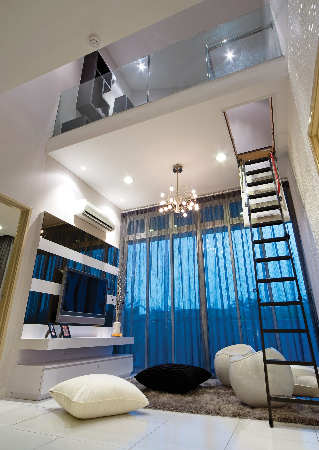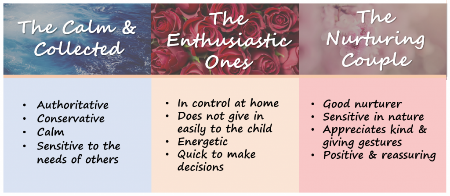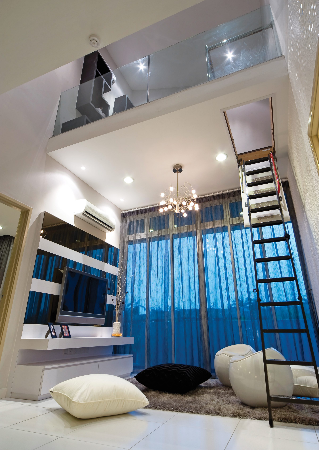Blog categories
Blog archive
RSS Blog posts tagged with 'personality'
Blog Filters
Choosing the Right Decorative Style for You
Friday, November 20, 2020
We've looked at kitchen countertop materials to describe various materials and how they may be suited to different personalities – but until now, we have not attempted to apply that same perspective to decorative styles. While decorative styles are probably as varied as people, we have been seeing some similar personalities gravitating towards particular aesthetic styles – which we will attempt to describe here for the benefit of anyone who might be in the midst of finding themselves and their preferred decorative style.
There are innumerable methods for analysing personality, but perhaps the most stringently tested theoretical framework would be that of the Big Five personality traits (openness, conscientiousness, extraversion, agreeableness, and neuroticism) – which will be the theory we adopt here in order to generally associate a particular decorative style with a dominant personality trait.
Openness
One of the first Big Five personality traits to be discussed is usually an individual's "openness to experience" – which roughly translates to a person's imagination and bravery to venture into uncharted waters. A person who is considered high in "openness" is regarded as being receptive to variety – easily gravitating towards learning, art, or other creative pursuits; while a person low in "openness" will display a preference for routine and representational works of art such as classical sculptures rather than abstract or interpretive designs.
 It takes a certain kind of bravery to seek out and incorporate unconventional features — such as the pictured loft space, made accessible with the addition of an industrial attic (loft) ladder. Interior design by: Nice-Style Refurbishment
It takes a certain kind of bravery to seek out and incorporate unconventional features — such as the pictured loft space, made accessible with the addition of an industrial attic (loft) ladder. Interior design by: Nice-Style Refurbishment
Historically accurate decorative styles such as faithful classicism may not be ideal for highly open individuals, who tend to prefer more varied, esoteric, or eccentric blends of styles to reflect their unique tastes. An open person would seek to forge a unique décor wherever possible – perhaps even going as far as rearranging entire floor plans to achieve something different. On the flipside, a less open person may gravitate toward styles that are more commonly represented in today's homes – or even a style representing something from childhood – while adhering to the convention of the day as much as possible.
Conscientiousness
Describing how people react to expectations of society at large, a person high in conscientiousness is more likely to consider rules both written and unspoken – such as is required when attempting to pay tribute to classical aesthetics. A highly conscientious person considers the experience of guests and visitors more than their own comfort, and will likely seek out a familiar décor – such as a variation of modern contemporary or classical modern style – to achieve a comforting ambience for the benefit of others while aiming for the hallmarks of luxury.
 A conscientious homeowner seeks to enforce implicit aesthetic rules rather than break them. Designer: Design Integra
A conscientious homeowner seeks to enforce implicit aesthetic rules rather than break them. Designer: Design Integra
A less conscientious individual may be seen as unpredictable and impulsive – and the right decorative style in this case is more a matter of personal preference than anything else. A person low in conscientiousness will likely gravitate towards a unique décor to represent their singular personalities, rather than adhering to convention for the satisfaction of guests.
Extraversion
The dichotomy of extraversion and introversion is perhaps the most popular of facets in personality research – a person is considered extroverted when they display an innate attraction for social activity, while an introvert is one who values alone-time over a stint of hanging out.
 The home of an extravert will more than likely present bold shades favoured by exuberant personalities. Interior design by: Surface R
The home of an extravert will more than likely present bold shades favoured by exuberant personalities. Interior design by: Surface R
Extroverts plan their home around social events, considering factors like the placement of extra seating and opting for bold colours rather than relying on a neutral palette. Introverts, on the other hand, will prefer to design for personal comfort and use softer colours in the creation of solitary spaces such as the study or the bedroom.
Agreeableness
A person is considered agreeable when they display a high sensitivity for the feelings of others – and their decorative choices might closer reflect the norms of modern styling, while less agreeable individuals may be seen as being more concerned with their own avenues of self-expression.
 Individuals high in agreeableness will tend to prioritise the familiarity of the neutral palette and twentieth-century designs over self-expression. Interior design by: Alpex Design
Individuals high in agreeableness will tend to prioritise the familiarity of the neutral palette and twentieth-century designs over self-expression. Interior design by: Alpex Design
The most intriguing and awe-inspiring decorative styles are to be found in the homes of less agreeable individuals – while one can expect something more contemporary, less esoteric, and with greater mass-appeal in the home of an agreeable person.
Neuroticism
As a measure of emotional stability and how well a person copes with stress, the trait of neuroticism is not as well associated with any particular decorative style as any of the four previously described personality traits – but some conclusions can still be drawn. For instance, a highly neurotic person with a stressful career may have no use or appreciation for a study — the mere sight of a workstation may elicit feelings of frustration in the home.
 A carefree personality, low in neuroticism, lets stress roll right off and wouldn't be the least bit disturbed by clutter or asymmetry. Interior design by: Pins Studio
A carefree personality, low in neuroticism, lets stress roll right off and wouldn't be the least bit disturbed by clutter or asymmetry. Interior design by: Pins Studio
Neuroticism also informs how one deals with clutter in the home, a person who is more inclined to keep spaces clean, and is also less willing to cope with the stress of a mess, will likely be on the lookout for storage options – while the messier and less neurotic among us may not have even considered cleaning up at all.

The Parenting Personality Palette
Friday, November 20, 2020
Nippon Paint Malaysia uncovers some of the key parenting personality traits based on your most frequented colour!
Did you know that your favourite colour reveals your dominant parenting style? Certain studies on the psychology of colour that have been carried out indicate that your preferred colour closely reflects some of your most dominant personality traits and strongest characteristics; even down to the various ways in which you behave towards your child (or children!). Take for instance, parents who prefer the blue hues are often regarded as more dependable and calm figures whilst those who gravitate towards brighter shades are known to be more assertive parents with a stronger personality. If you have more than ONE favourite colour, you may not have all the traits from one particular colour, but instead your parenting style comprises of a mixture of the various characteristics. Let’s say if you’re fond of hues such as pink and yellow, you may have a sensitive personality with enthusiastic vibes.


Read on below to find out if your favourite shade closely reflects your parenting traits.
The Parenting Personality Palette
It’s time to reflect upon your true colours and see if your favourite colour resonates closely with your respective parenting traits.
Nippon Paint Malaysia offers a wide range of colours that matches your parenting personality to the tee, ranging from dark to the lighter spectrum of hues, from warmer to cooler colour shades. There’s mocha brown, khaki green, rose-pink… and the list goes on!
How about taking inspiration to the next level and reflecting your parenting personality colour(s) on the walls of your home?
Here are some colours from Nippon Paint to consider for your next redecorating project at home featuring your parenting personality colour complemented with other suitable shades:
The Calm & Collected (Blue)
The colour blue is recognised as the most calming shade of the colour spectrum, which makes it one of the top choices of favourite colours around the world. If you find yourself not overreacting to your children most of the time, the colour blue reflects your calm persona best.

To create overall soothing vibes all around your home, select colours such as light green, or a light peach to fully complement your blue themed walls. If you’re a true-blue fan, you could even opt for pairing the palest blue with navy without overwhelming your entire room.
The Enthusiastic Ones (Red)
Red is known to be a strong colour that resonates well amongst those that carry a more dominating trait. Parents who favour the colour red are typically strong-willed – and much like the colour, they do not easily give in to a child’s requests.

However, in a home, everything in the colour red may be too overwhelming… so why not try balance red with softer shades such as light grey or neutral beige tones for a greater contrast?
The Nurturing Couple (Pink)
Those who like the colour pink often convey a reassuring ear to their children and see things in a positive light in most situations. While light pink is gentler on the eyes; some are a fan of brighter pinks such as fuchsia which also look great on walls if paired with clean colours such as beige or the lightest shade of yellow.

If you’re a fan of lighter shades of pink, try complementing this with light pink tones for a classy look or opt for striking blue for fun vibes.
The Fair Minded (Green)
A colour that reflects the personality of a calm yet logical and analytical figure who often takes a more supportive and nurturing approach at most instances. If you find yourself reasoning with your child or children over their actions, green is the colour for you. Being a neutral shade, green can be paired with almost any shade on the colour wheel, depending on the desired ambience for your room.

To fully resonate with your calm personality, go along the lines of a pastel pink with a soft peach shade. Otherwise, for those who prefer strong green undertones, match your green feature wall with a light oak brown shade for a down-to-earth vibe.
The Cool Ones (Yellow)
Yellow represents the colour of enthusiastic parents who are often easily excitable over most things, their children included. When you think yellow, the first word that comes to mind is ‘bright’! …which makes the colour an easy feat to match with two extremes, either choosing to pair it with a pale colour or opting for colours on the darker end of the spectrum.

For a dark colour, shades such green or grey makes for a good contrast against any yellow-themed feature wall. For an earthier tone, opt for colours such as brown.
Here are some top tips to consider when repainting your home!
- To ensure a safe environment for your child/children, try a child-safe odorless paint from Nippon Paint’s Child Wellness Range (For more information, log on to: www.nipponpaint.com.my/childwellness)
- Opt for colours which are contrasting to your feature wall for a vibrant look
- Measure the space of each room to get an estimated amount of paint required
- Care for the walls of your home by ensuring proper preparation is carried out (i.e priming the walls prior to painting)
- Have a rough idea on your overall colour theme. Fret not if you’re unsure of what colour suits your room best and opt for expert advice from Nippon Paint’s Colour Scheme Professional Services at www.colourscheme.com.my to get the perfect recommended shades for your rooms.
If you’re looking to repaint the walls of your home but are unsure where to begin, visit www.nipponpaint.com.my to spark some inspiration!
Text and images by Nippon Paint
Choosing the Right Decorative Style for You
Friday, November 20, 2020
We've looked at kitchen countertop materials to describe various materials and how they may be suited to different personalities – but until now, we have not attempted to apply that same perspective to decorative styles. While decorative styles are probably as varied as people, we have been seeing some similar personalities gravitating towards particular aesthetic styles – which we will attempt to describe here for the benefit of anyone who might be in the midst of finding themselves and their preferred decorative style.
There are innumerable methods for analysing personality, but perhaps the most stringently tested theoretical framework would be that of the Big Five personality traits (openness, conscientiousness, extraversion, agreeableness, and neuroticism) – which will be the theory we adopt here in order to generally associate a particular decorative style with a dominant personality trait.
Openness
One of the first Big Five personality traits to be discussed is usually an individual's "openness to experience" – which roughly translates to a person's imagination and bravery to venture into uncharted waters. A person who is considered high in "openness" is regarded as being receptive to variety – easily gravitating towards learning, art, or other creative pursuits; while a person low in "openness" will display a preference for routine and representational works of art such as classical sculptures rather than abstract or interpretive designs.
 It takes a certain kind of bravery to seek out and incorporate unconventional features — such as the pictured loft space, made accessible with the addition of an industrial attic (loft) ladder. Interior design by: Nice-Style Refurbishment
It takes a certain kind of bravery to seek out and incorporate unconventional features — such as the pictured loft space, made accessible with the addition of an industrial attic (loft) ladder. Interior design by: Nice-Style Refurbishment
Historically accurate decorative styles such as faithful classicism may not be ideal for highly open individuals, who tend to prefer more varied, esoteric, or eccentric blends of styles to reflect their unique tastes. An open person would seek to forge a unique décor wherever possible – perhaps even going as far as rearranging entire floor plans to achieve something different. On the flipside, a less open person may gravitate toward styles that are more commonly represented in today's homes – or even a style representing something from childhood – while adhering to the convention of the day as much as possible.
Conscientiousness
Describing how people react to expectations of society at large, a person high in conscientiousness is more likely to consider rules both written and unspoken – such as is required when attempting to pay tribute to classical aesthetics. A highly conscientious person considers the experience of guests and visitors more than their own comfort, and will likely seek out a familiar décor – such as a variation of modern contemporary or classical modern style – to achieve a comforting ambience for the benefit of others while aiming for the hallmarks of luxury.
 A conscientious homeowner seeks to enforce implicit aesthetic rules rather than break them. Designer: Design Integra
A conscientious homeowner seeks to enforce implicit aesthetic rules rather than break them. Designer: Design Integra
A less conscientious individual may be seen as unpredictable and impulsive – and the right decorative style in this case is more a matter of personal preference than anything else. A person low in conscientiousness will likely gravitate towards a unique décor to represent their singular personalities, rather than adhering to convention for the satisfaction of guests.
Extraversion
The dichotomy of extraversion and introversion is perhaps the most popular of facets in personality research – a person is considered extroverted when they display an innate attraction for social activity, while an introvert is one who values alone-time over a stint of hanging out.
 The home of an extravert will more than likely present bold shades favoured by exuberant personalities. Interior design by: Surface R
The home of an extravert will more than likely present bold shades favoured by exuberant personalities. Interior design by: Surface R
Extroverts plan their home around social events, considering factors like the placement of extra seating and opting for bold colours rather than relying on a neutral palette. Introverts, on the other hand, will prefer to design for personal comfort and use softer colours in the creation of solitary spaces such as the study or the bedroom.
Agreeableness
A person is considered agreeable when they display a high sensitivity for the feelings of others – and their decorative choices might closer reflect the norms of modern styling, while less agreeable individuals may be seen as being more concerned with their own avenues of self-expression.
 Individuals high in agreeableness will tend to prioritise the familiarity of the neutral palette and twentieth-century designs over self-expression. Interior design by: Alpex Design
Individuals high in agreeableness will tend to prioritise the familiarity of the neutral palette and twentieth-century designs over self-expression. Interior design by: Alpex Design
The most intriguing and awe-inspiring decorative styles are to be found in the homes of less agreeable individuals – while one can expect something more contemporary, less esoteric, and with greater mass-appeal in the home of an agreeable person.
Neuroticism
As a measure of emotional stability and how well a person copes with stress, the trait of neuroticism is not as well associated with any particular decorative style as any of the four previously described personality traits – but some conclusions can still be drawn. For instance, a highly neurotic person with a stressful career may have no use or appreciation for a study — the mere sight of a workstation may elicit feelings of frustration in the home.
 A carefree personality, low in neuroticism, lets stress roll right off and wouldn't be the least bit disturbed by clutter or asymmetry. Interior design by: Pins Studio
A carefree personality, low in neuroticism, lets stress roll right off and wouldn't be the least bit disturbed by clutter or asymmetry. Interior design by: Pins Studio
Neuroticism also informs how one deals with clutter in the home, a person who is more inclined to keep spaces clean, and is also less willing to cope with the stress of a mess, will likely be on the lookout for storage options – while the messier and less neurotic among us may not have even considered cleaning up at all.

The Parenting Personality Palette
Friday, November 20, 2020
Nippon Paint Malaysia uncovers some of the key parenting personality traits based on your most frequented colour!
Did you know that your favourite colour reveals your dominant parenting style? Certain studies on the psychology of colour that have been carried out indicate that your preferred colour closely reflects some of your most dominant personality traits and strongest characteristics; even down to the various ways in which you behave towards your child (or children!). Take for instance, parents who prefer the blue hues are often regarded as more dependable and calm figures whilst those who gravitate towards brighter shades are known to be more assertive parents with a stronger personality. If you have more than ONE favourite colour, you may not have all the traits from one particular colour, but instead your parenting style comprises of a mixture of the various characteristics. Let’s say if you’re fond of hues such as pink and yellow, you may have a sensitive personality with enthusiastic vibes.


Read on below to find out if your favourite shade closely reflects your parenting traits.
The Parenting Personality Palette
It’s time to reflect upon your true colours and see if your favourite colour resonates closely with your respective parenting traits.
Nippon Paint Malaysia offers a wide range of colours that matches your parenting personality to the tee, ranging from dark to the lighter spectrum of hues, from warmer to cooler colour shades. There’s mocha brown, khaki green, rose-pink… and the list goes on!
How about taking inspiration to the next level and reflecting your parenting personality colour(s) on the walls of your home?
Here are some colours from Nippon Paint to consider for your next redecorating project at home featuring your parenting personality colour complemented with other suitable shades:
The Calm & Collected (Blue)
The colour blue is recognised as the most calming shade of the colour spectrum, which makes it one of the top choices of favourite colours around the world. If you find yourself not overreacting to your children most of the time, the colour blue reflects your calm persona best.

To create overall soothing vibes all around your home, select colours such as light green, or a light peach to fully complement your blue themed walls. If you’re a true-blue fan, you could even opt for pairing the palest blue with navy without overwhelming your entire room.
The Enthusiastic Ones (Red)
Red is known to be a strong colour that resonates well amongst those that carry a more dominating trait. Parents who favour the colour red are typically strong-willed – and much like the colour, they do not easily give in to a child’s requests.

However, in a home, everything in the colour red may be too overwhelming… so why not try balance red with softer shades such as light grey or neutral beige tones for a greater contrast?
The Nurturing Couple (Pink)
Those who like the colour pink often convey a reassuring ear to their children and see things in a positive light in most situations. While light pink is gentler on the eyes; some are a fan of brighter pinks such as fuchsia which also look great on walls if paired with clean colours such as beige or the lightest shade of yellow.

If you’re a fan of lighter shades of pink, try complementing this with light pink tones for a classy look or opt for striking blue for fun vibes.
The Fair Minded (Green)
A colour that reflects the personality of a calm yet logical and analytical figure who often takes a more supportive and nurturing approach at most instances. If you find yourself reasoning with your child or children over their actions, green is the colour for you. Being a neutral shade, green can be paired with almost any shade on the colour wheel, depending on the desired ambience for your room.

To fully resonate with your calm personality, go along the lines of a pastel pink with a soft peach shade. Otherwise, for those who prefer strong green undertones, match your green feature wall with a light oak brown shade for a down-to-earth vibe.
The Cool Ones (Yellow)
Yellow represents the colour of enthusiastic parents who are often easily excitable over most things, their children included. When you think yellow, the first word that comes to mind is ‘bright’! …which makes the colour an easy feat to match with two extremes, either choosing to pair it with a pale colour or opting for colours on the darker end of the spectrum.

For a dark colour, shades such green or grey makes for a good contrast against any yellow-themed feature wall. For an earthier tone, opt for colours such as brown.
Here are some top tips to consider when repainting your home!
- To ensure a safe environment for your child/children, try a child-safe odorless paint from Nippon Paint’s Child Wellness Range (For more information, log on to: www.nipponpaint.com.my/childwellness)
- Opt for colours which are contrasting to your feature wall for a vibrant look
- Measure the space of each room to get an estimated amount of paint required
- Care for the walls of your home by ensuring proper preparation is carried out (i.e priming the walls prior to painting)
- Have a rough idea on your overall colour theme. Fret not if you’re unsure of what colour suits your room best and opt for expert advice from Nippon Paint’s Colour Scheme Professional Services at www.colourscheme.com.my to get the perfect recommended shades for your rooms.
If you’re looking to repaint the walls of your home but are unsure where to begin, visit www.nipponpaint.com.my to spark some inspiration!
Text and images by Nippon Paint




